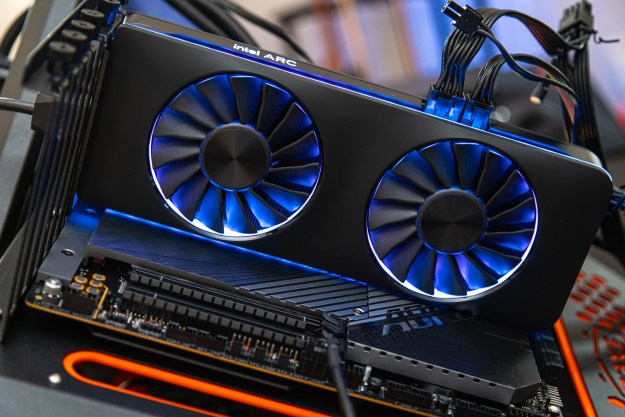
The most mainstream chips are the new i7 mobile processors. These include the i7-6770HQ, 6870HQ, and 6970HQ, with a base clock of 2.6, 2.7, and 2.8GHz, respectively. All three chips boast four cores, Hyper-Threading, and an 8M cache. Prices range from $378 to $623, but they’re mobile processors, so you won’t be buying them except when they’re pre-installed in a system.
These chips fill an important role, and will be making their way into mid-to-high-end
Related: How Intel’s Skylake processor will dramatically improve your next PC
A bit further down the performance spectrum, there’s a new Skylake i5 chip, the 6350HQ. It’s quad-core that lacks Hyper-Threading, a change from the dual-core with HT we saw in previous i5 generations. The new chip sports a 2.3GHz base clock and 6M of cache, sliding in right at the highest end of Intel’s mid-tier offerings.
For ultra low-power devices, there are a few new additions as well. There’s a Pentium chip, the N3710, a quad-core chip with up to 2.56GHz base clock, priced at $161. There are also three new Celeron mobile chips, the N3010, N3060, and N3160. The first two are dual-core chips, while the third boasts four cores. The N3010 and N3160 have a max base clock of 2.24GHz, while the N3060’s is a bit higher at 2.48GHz.
There are some new low-power desktop chips as well that were announced back in November, but are just making their debut now. While the new chips are 14nm, they aren’t Skylake, but are instead based off Intel’s Braswell platform, the follow-up to Bay Trail-D. These processors who up in low-cost laptops, computer sticks, and other inexpensive, small systems.
There’s one new Pentium, the quad-core J3710 with a 2.64GHz max base clock, which will retail for $161 – basically a slightly faster version of the existing N3700. There are also five new Celeron chips, two full power, and three reduced power versions. They range from $42 to $107, mostly dual-core, with the quad-core, 2.24GHz J3160 sitting at the top of the pile.
Despite the fact that the new chips are intended for desktop use, it’s unlikely that any of them will be available in a socketed variation, with the exception of the Pentium chip, and even that’s doubtful. Intel has been more reluctant than ever to allow builders to put hands on its cheapest chips, and the Celeron line generally isn’t available for that community anyway.
Along with the consumer CPUs, there’s also a trio of new Skylake-powered Xeon chips for mobile workstations. At the top end, there’s now an E3-1575M v5, a quad-core chip with Hyper-Threading, a 3GHz Base Clock, and an 8M cache. It carries a $1,207 tray price, but no one said performance comes cheap.
The other two new Xeon processors, the E3-1515M v5 and E31545-M v5, are a bit more modest. They cost $489 and $679 respectively, with the same features as the 1575M, but with slightly lower 2.8 and 2.9GHz base clocks.
Xeon processors aren’t meant for gaming or personal computing, and instead include special functionality geared towards CAD and computational work. The high prices Intel is asking for these chips is indicative of the market, where they’ll likely end up in powerful mobile workstations and other special applications.
Though manufacturers will want to start slamming these into laptops as soon as possible, they’re still likely a few months out from being able to do so.
Editors' Recommendations
- Intel’s new CPU feature boosted my performance by 26% — but it still needs work
- Intel CPU gaming crashes are causing an uproar
- Intel’s new Core Ultra chips needed to be more than this
- I tested Intel’s new overclocking tool, and it does AI all wrong
- I tested Intel’s Core i5-14600K against its cheaper sibling. Don’t waste your money


